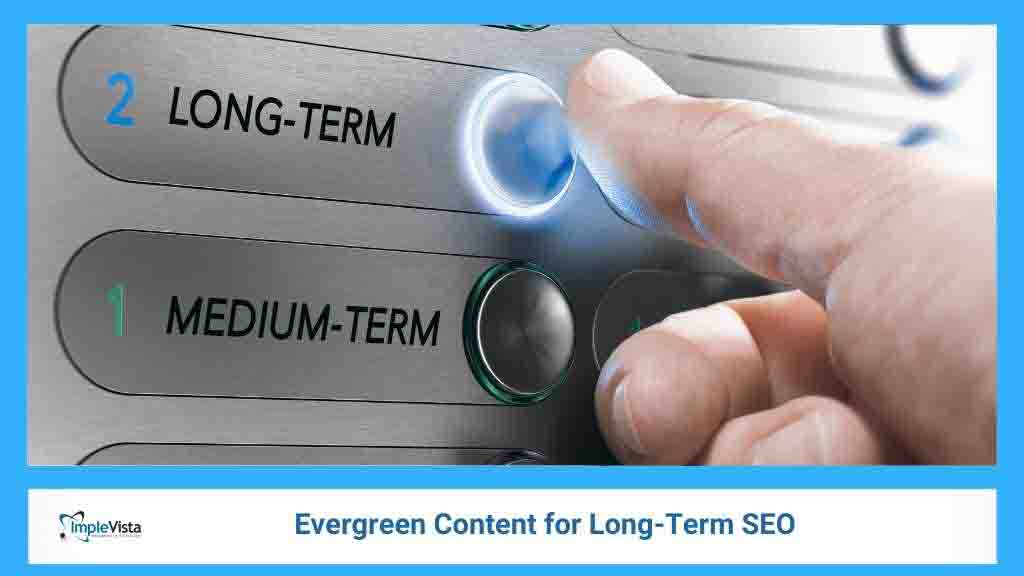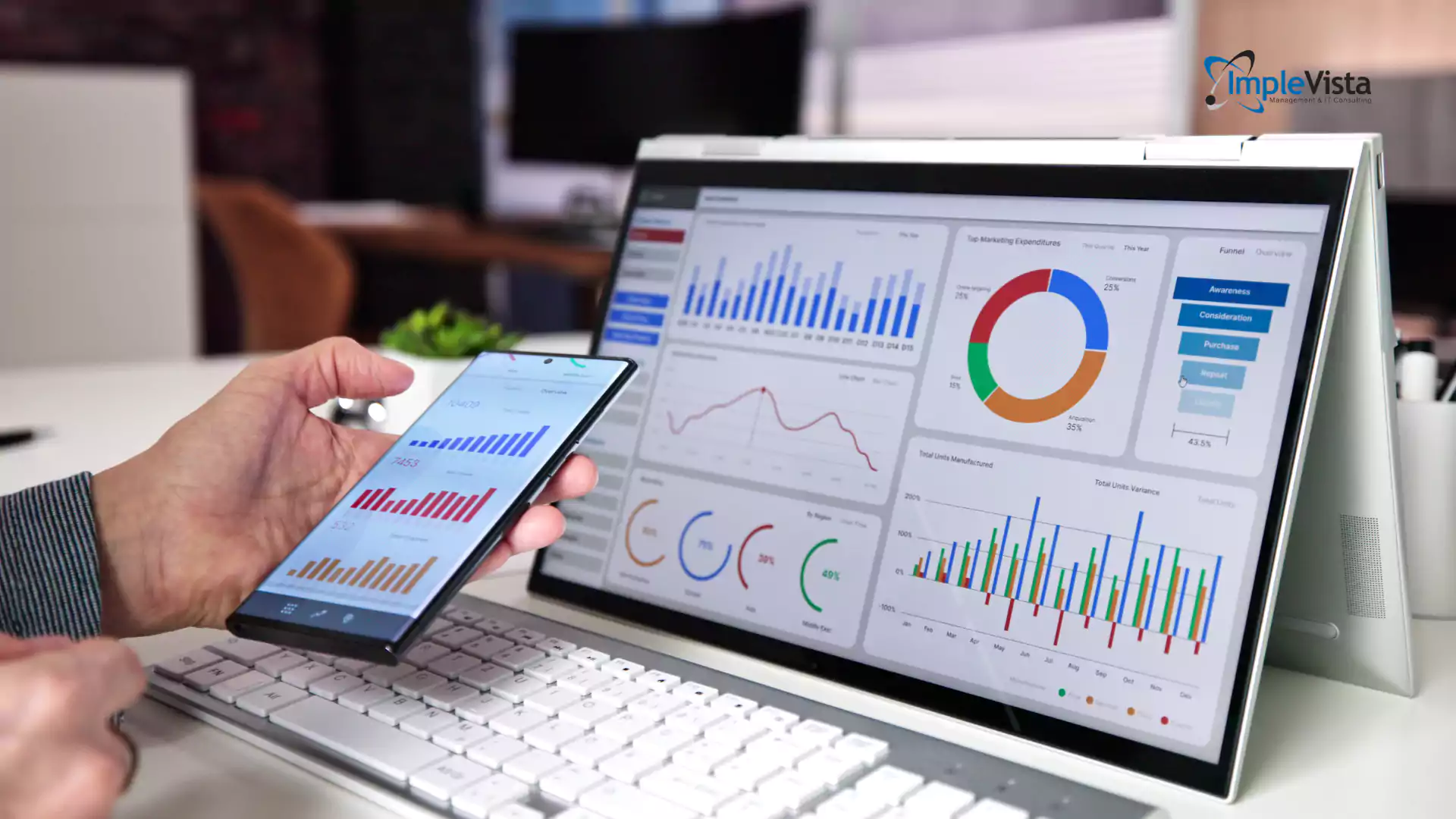In the digital marketing landscape, businesses constantly seek sustainable ways to boost their search engine rankings. One of the most effective long term SEO strategies is building authority through evergreen content. Unlike trending topics that fade over time, evergreen content remains relevant, providing continuous value and driving consistent organic traffic.
This article explores how businesses can leverage evergreen content to enhance their SEO strategy, covering key concepts such as content longevity, authority building, and practical implementation techniques.
What is SEO in Digital Marketing?
SEO (Search Engine Optimization) in digital marketing refers to the process of optimizing a website to improve its visibility on search engines like Google, Bing, and Yahoo. The goal of SEO is to increase organic (non-paid) traffic by ranking higher in search engine results pages (SERPs).
Key Aspects of SEO in Digital Marketing:
- On-Page SEO – Optimizing website content, keywords, meta tags, headings, and internal linking to improve relevance and user experience.
- Off-Page SEO – Building backlinks, social media signals, and brand mentions to increase website authority and credibility.
- Technical SEO – Ensuring site speed, mobile-friendliness, structured data, and proper indexing to enhance website performance.
- Local SEO – Optimizing for local searches by using Google My Business, location-based keywords, and local citations.
- Content SEO – Creating high-quality, relevant, and engaging content that aligns with search intent and improves rankings.
- SEO Audit – Regularly evaluating website performance for improvements.
- SEO Services – Professional optimization strategies for better rankings.
Why is SEO Important in Digital Marketing?
SEO (Search Engine Optimization) is a fundamental aspect of digital marketing that helps businesses improve their online visibility, attract organic traffic, and increase conversions. Here’s why SEO is crucial in digital marketing:
1. Increases Organic Traffic
SEO helps websites rank higher in search engine results pages (SERPs), making it easier for potential customers to find your business. Unlike paid ads, organic traffic is free and long-lasting.
2. Builds Credibility and Trust
A well-optimized website with high rankings signals trust and authority to users. Factors like high-quality content, backlinks, and good user experience contribute to building brand credibility.
3. Improves User Experience (UX)
SEO involves optimizing site speed, mobile responsiveness, and easy navigation, which enhances the overall user experience, reducing bounce rates and increasing engagement.
4. Cost-Effective Marketing Strategy
Unlike paid advertising, SEO provides a higher return on investment (ROI) because it delivers continuous traffic without ongoing ad spend. It’s a sustainable way to generate leads and sales over time.
5. Enhances Local Visibility
With Local SEO, businesses can rank in location-based searches, making them more accessible to nearby customers. This is especially beneficial for small businesses targeting specific geographic areas.
6. Gives a Competitive Advantage
If your competitors invest in SEO and you don’t, you risk losing valuable traffic and customers. A strong SEO strategy ensures you stay ahead in your industry.
7. Supports Other Digital Marketing Efforts
SEO complements content marketing, social media marketing, PPC, and email marketing by improving website visibility and attracting quality leads.
Importance of Evergreen Content in Long Term SEO
Evergreen content plays a crucial role in long term SEO by driving consistent organic traffic, improving search rankings, and enhancing brand authority over time. Unlike trending or time-sensitive content, evergreen content remains relevant, valuable, and searchable for years.
1. Continuous Organic Traffic
Evergreen content attracts visitors over time without losing relevance. Unlike news-based or seasonal content, evergreen topics drive consistent organic traffic.
2. Higher Authority and Credibility
Search engines favor websites that provide valuable, informative, and timeless content. Publishing high-quality evergreen content helps establish your brand as an industry authority.
3. Improved Search Rankings
Google prioritizes valuable content that meets user intent. By consistently updating and optimizing evergreen content, businesses can maintain and improve their search rankings.
4. Cost-Effective SEO Strategy
Instead of continuously creating new content, updating and repurposing evergreen content reduces marketing costs while maintaining SEO performance.
5. Higher Search Engine Rankings
Search engines prioritize high-quality, evergreen content because it consistently matches user intent. Over time, well-optimized evergreen posts climb SERPs, generating sustainable visibility.
6. Increased Backlinks and Shares
Evergreen content naturally earns backlinks as other websites reference it over time. This improves domain authority, further boosting SEO rankings.
7. Long-Term Cost Efficiency
Unlike time-sensitive content that requires frequent updates, evergreen content delivers long-term value with minimal maintenance, making it a cost-effective SEO strategy.
8. Strengthens Brand Authority
Consistently publishing valuable evergreen content establishes your brand as an industry expert. Users trust and return to authoritative sources, improving engagement and conversions.
Examples of Evergreen Content for SEO
Evergreen content is timeless, continuously valuable, and relevant to readers long after its publication. It plays a vital role in SEO by attracting consistent organic traffic, building authority, and improving search rankings. Below are detailed examples of evergreen content that can help boost your long term SEO strategy.
1. How-To Guides
Example: “How to Conduct a Competitive SEO Analysis”
How-to guides are step-by-step instructional articles that remain relevant because the fundamental process doesn’t change drastically over time. They provide practical solutions to common problems, making them highly searchable and shareable.
Why It’s Evergreen:
- Covers a timeless topic (e.g., SEO analysis, keyword research).
- Users consistently search for step-by-step solutions.
- Can be updated with new tools or strategies as needed.
SEO Tips for How-To Guides:
✔ Target long-tail keywords (e.g., “how to do SEO competitor analysis”).
✔ Use structured headings (H2, H3, H4) for better readability.
✔ Include visuals like screenshots and infographics to enhance engagement.
✔ Optimize with internal and external links for additional resources.
2. Listicles
Example: “Top SEO Tools for Beginners”
List articles (listicles) break down information into numbered or bullet points, making them easy to read and digest. They attract traffic because users often search for recommendations and comparisons.
Why It’s Evergreen:
- Tools may evolve, but the concept remains relevant.
- People continuously search for best practices and resources.
- Content can be refreshed with new additions or updates.
SEO Tips for Listicles:
✔ Use odd-numbered lists (e.g., “7 Best SEO Tools” performs better than “6 Best SEO Tools”).
✔ Incorporate keywords naturally in headings and descriptions.
✔ Update outdated tools or strategies to maintain relevance.
✔ Add a summary section for quick takeaways.
3. Ultimate Guides
Example: “Complete Guide to Local SEO in Bangladesh”
Ultimate guides serve as comprehensive, one-stop resources on a topic. These long-form articles cover all aspects of a subject, making them highly shareable and valuable for SEO.
Why It’s Evergreen:
- Covers a broad topic with long-term relevance.
- Attracts backlinks from other websites as a reference.
- Encourages users to spend more time on the page (reducing bounce rate).
SEO Tips for Ultimate Guides:
✔ Use table of contents for easy navigation.
✔ Structure content with scannable subheadings and bullet points.
✔ Include case studies, data, or expert insights to add credibility.
✔ Optimize for featured snippets by answering common questions concisely.
4. Educational Content
Example: “What is On-Page SEO and Why Does It Matter?”
Educational content explains concepts, definitions, and processes in a clear, informative manner. It helps users understand fundamentals and builds trust in your brand.
Why It’s Evergreen:
- Core principles (like On-Page SEO techniques) remain constant.
- Targets beginners and industry professionals alike.
- Can be repurposed into videos, infographics, or FAQs.
SEO Tips for Educational Content:
✔ Answer common questions (e.g., “What is SEO?” “Why is it important?”).
✔ Use simple language to make it accessible to all readers.
✔ Link to related blog posts for additional information.
✔ Optimize with FAQs at the end to boost featured snippet chances.
5. Best Practices and Tips
Example: “SEO Best Practices for E-commerce Websites”
Best practice articles provide industry insights, expert recommendations, and optimization techniques that remain valuable over time.
Why It’s Evergreen:
- Offers timeless strategies that can be updated as needed.
- Businesses constantly look for improvement tips.
- Encourages repeat visits as users check back for updates.
SEO Tips for Best Practices Content:
✔ Use actionable advice rather than generic tips.
✔ Include examples or case studies to illustrate effectiveness.
✔ Keep the article updated with new trends and tools.
✔ Optimize meta descriptions and headers with target keywords.
Why Invest in Evergreen Content?
Evergreen content forms the foundation of long term SEO success. It consistently drives organic traffic, enhances brand credibility, and generates sustainable engagement.
How to Optimize Evergreen Content for SEO
✔ Use timeless keywords with long-term search potential.
✔ Regularly update content to keep it fresh and accurate.
✔ Optimize for readability with structured headings and bullet points.
✔ Add internal links to improve navigation and SEO performance.
✔ Repurpose content into infographics, videos, or social media posts.
How to Create Evergreen Content for Long Term SEO
1. Choose Evergreen Topics
Selecting the right topic is crucial. Focus on subjects that will remain relevant for years, such as:
- “What is SEO in Digital Marketing?”
- “The Best Supply Chain Management Process Explained”
- “How to Perform an Effective SEO Audit”
2. Conduct Thorough Keyword Research
Use tools like Google Keyword Planner and Ahrefs to identify high-traffic, low-competition keywords related to your industry. Ensure a balanced mix of primary, secondary, and long-tail keywords.
3. Write High-Quality, In-Depth Content
- Provide comprehensive answers to common industry questions.
- Use a conversational tone to improve readability.
- Break content into short paragraphs, bullet points, and subheadings for better user experience.
4. Optimize for SEO
- Use the primary keyword “Long Term SEO” with a 1% density.
- Add relevant secondary keywords naturally throughout the article.
- Include multimedia (images, infographics, videos) with keyword-optimized alt text.
5. Regularly Update Content
Even evergreen content requires occasional updates. Refresh outdated statistics, add new insights, and improve readability to keep content relevant.
6. Leverage Internal and External Links
- Link to other relevant content on your website to improve engagement.
- Include authoritative external links to boost credibility.
7. Ensure Technical SEO Compliance
- Optimize for mobile-friendliness and fast loading times.
- Improve Core Web Vitals to enhance user experience.
- Use schema markup to improve search visibility.
Internal and External Linking Strategy
Internal Links
- Link to related blog posts or service pages to improve site navigation and engagement.
- Example: “Learn more about our SEO Services.”
External Links
- Cite authoritative sources like Google Search Central, Moz, or SEMrush for credibility.
- Example: “Google’s SEO Guidelines provide valuable insights.”
Frequently Asked Questions (FAQs)
1. What is SEO in digital marketing?
SEO in digital marketing refers to optimizing content and websites to rank higher in search engine results and attract organic traffic.
2. Why is evergreen content important for SEO?
Evergreen content remains relevant over time, consistently driving organic traffic and improving search rankings.
3. How do I choose topics for evergreen content?
Focus on industry-relevant, long-lasting topics such as “SEO best practices” and “supply chain management process.”
4. What is the difference between evergreen content and trending content?
Evergreen content stays relevant indefinitely, while trending content has a short lifespan.
5. How often should I update evergreen content?
Review and update your content every 6–12 months to maintain accuracy and relevance.
6. What are examples of evergreen content?
Guides, tutorials, FAQs, and industry best practices are examples of evergreen content.
7. Can evergreen content improve domain authority?
Yes, consistently publishing high-quality evergreen content helps build trust and authority in your niche.
8. How do internal links benefit SEO?
Internal links improve user experience, boost engagement, and enhance search engine crawlers’ ability to index pages.
9. How does multimedia impact SEO performance?
Relevant images, infographics, and videos improve user experience and increase content engagement, boosting rankings.
10. How can Implevista Digital help with evergreen content?
Implevista Digital provides expert SEO strategies and content marketing solutions to enhance your brand’s online presence.By following these strategies, businesses can harness the power of evergreen content to achieve sustainable SEO success. Start optimizing today to build lasting authority in your industry!
Want to improve your website’s long term SEO strategy? Contact Implevista Digital today for expert SEO services and evergreen content solutions!






